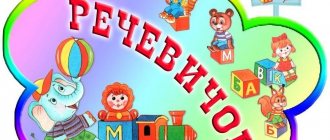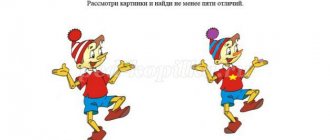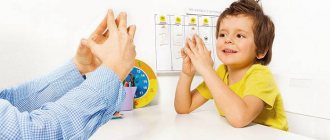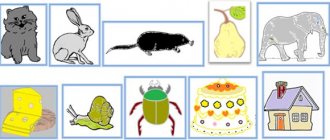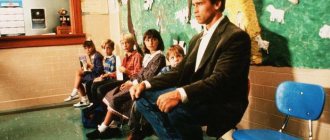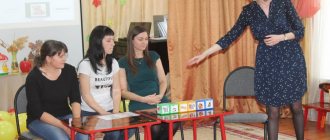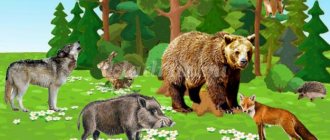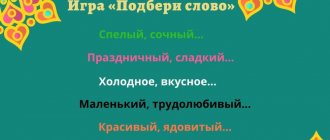Features of speech in early preschool age
Features of speech in early preschool age lie in the different stages of development of the baby’s speech.
Stage 1: screaming. The baby screams when he wants to report a problem, to attract attention to himself. Gradually, screaming becomes a means of communication, the first way to conduct a dialogue. By the third month, the baby learns to change the intonation of cries, by which attentive parents can understand what is causing the dissatisfaction: the child is grumbling, whining, something hurts, he wants to eat, etc.
Stage 2: buzzing. Humming is sound variations: drawn-out pronunciations of “agu”, “agi”, “gee”, “ge”, etc. With this type of speech, interaction is also important. By chanting sounds, the baby seeks contact and tries to build a dialogue. Parents should come into contact with the child, respond in a language he understands, introducing the first words into speech. The child will try to imitate you.
Stage 3: babbling. When the baby is 6-7 months old, he will begin to pronounce the first syllables: “ba”, “pa”, “ma”, etc. Gradually they will be repeated many times, which will precede the appearance of the first words.
“Did you know that humming and babbling are important manifestations of a baby’s speech, which prepare him for further speech development. If you do not see these manifestations, then they need to be stimulated. For example, holding the child close to your face, repeat the syllables clearly, recite poems and sing songs. Talk to your child more often using adult language.”
Stage 4: first words. As the child approaches the age of one year, it is important to help the child say his first words. You need to read aloud more, name all the objects around, comment on all actions. At this stage, speech therapists recommend training the muscles of the cheeks and lips - with the help of whistles, harmonicas and soap bubbles, as well as special articulatory gymnastics (simply put, making faces and depicting emotions).
An important point in the development of the speech of younger preschoolers is the appearance of onomatopoeic, simplified words (“av-av”, “lyalya”, “bibika”, etc.). It is currently difficult for your child to pronounce words correctly, but later, with your help, he will learn to name objects and actions correctly.
We walk and talk
You can develop the speech of younger preschoolers on walks. Such “activities” are very natural, bring children a lot of impressions, and contribute to their knowledge of the world. While walking, the baby will begin to ask a lot of questions, many of which encourage the thought process and require the expression of emotions and thoughts using words. And all parents can do is communicate with the child, expanding his vocabulary, enriching his knowledge. This is how the child learns new words and concepts that will soon become mandatory in his everyday speech. Don't be afraid that the baby won't understand you. During these valuable moments of communication, the baby listens and learns to perceive his native speech.
“Did you know that walking is one of the most effective ways to develop a child’s speech? All that remains is to organize it correctly.”
During the walk we recommend:
- describe everything that surrounds you
- keep your baby interested in what is happening around him
- use different parts of speech to name objects, their signs and actions
- speak emotionally and intonation richly, in a calm tone.
Environment for speech development
For successful speech development of a child, it is necessary to create conditions that would contribute to the formation of good speech skills. Such conditions can be created both in a preschool institution and in the family. The developmental environment will provide different types of activity for the younger preschooler (speech, mental, physical and play) and will successfully form his independent speech activity.
So, what needs to be done to create a cozy environment at home, rich in a variety of educational gaming and educational materials?
- At home, conditions must be created for the baby’s independent activity - for play, cognition, movement, imagery.
- Items in the child’s room should be suitable for the baby’s age and correspond to his interests and needs.
- At home, communication between the child and adults should be organized.
- Parents should help organize the child’s contacts with peers.
- Mom and dad should offer the child books, pictures, toys, and objects for independent study in order to deepen knowledge about the world around them.
- You can organize a “corner” of interesting things with didactic materials that encourage speech activity.
- Parents should not only actively communicate with the child, naming all actions, but also read and study in the direction of speech development.
Thus, a well-prepared developmental environment will contribute to the formation of speech skills of younger preschoolers and will ensure their independent natural speech development.
Educational didactic games
At the age when the child gradually moves from babbling to words (1.5-2 years), you can start playing useful didactic games with him for speech development:
- “What object is this?” The mother takes the prepared toy out of the bag, describes it, and then offers to describe it to the baby.
- “Guess what toy.” There are 3-4 toys in front of the baby. Mom describes one of them, and the baby guesses it from the description.
- “Describe the doll.” The mother invites the child to describe the doll in detail.
- "Mystery Box" Mom put themed pictures in a bright box in advance. The kid takes out one picture at a time and describes what he sees.
- “Tell me what object?” The child takes toys out of the box and names their characteristics (adjectives).
- "Wonderful cubes." The baby throws a dice with pictures. The red picture appears - the child says what he sees and gives a description of the depicted object.
- “Where is the toy?” The mother lays out toys in the room and invites the child to name where each of them is located. Mom should tell the baby how to correctly use the words “in”, “on”, “behind”, “under”, “about”, “next to”, “between”, “right”, “left”.
- "Postcard". The mother shows the child postcards with images of people and animals performing different actions. The child must name what action is depicted on the postcard.
These games are suitable for children from 1.5 to 4 years old. There are many such games. Parents, if desired, can come up with them themselves, making activities with their baby enjoyable leisure time, full of the joy of new discoveries.
